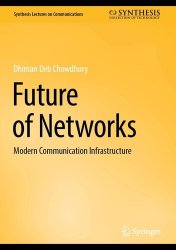- Добавил: literator
- Дата: 26-01-2025, 02:32
- Комментариев: 0
 Название: Machine Learning for Radio Resource Management and Optimization in 5G and Beyond
Название: Machine Learning for Radio Resource Management and Optimization in 5G and BeyondАвтор: Mariyam Ouaissa, Mariya Ouaissa, Hanane Lamaazi, Khadija Slimani, Ihtiram Raza Khan, B. Sundaravadivazhagan
Издательство: CRC Press
Год: 2025
Страниц: 249
Язык: английский
Формат: pdf (true), epub
Размер: 12.3 MB
Machine Learning for Radio Resource Management and Optimization in 5G and Beyond highlights a new line of research that uses innovative technologies and methods based on Artificial Intelligence/Machine Learning techniques to address issues and challenges related to radio resource management in 5G and 6G communication systems. This book provides comprehensive coverage of current and emerging waveform design, channel modeling, multiple access, random access, scheduling, network slicing, and resource optimization for 5G wireless networks and beyond. This book provides a comprehensive reference for researchers, scholars, and industry professionals in different fields related to mobile networks and intelligent systems. It can also be a hands-on resource for students interested in the fields of cellular networks (5G/6G) and computational intelligence.






 Название: Entity-Oriented Search
Название: Entity-Oriented Search

